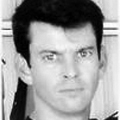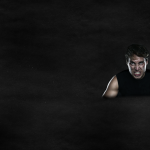A swimming pool in the tropics is supposed to be warm and comfortable, unless you are a student at the Naval Submarine Training Center – Pacific (NSTCP) SCUBA School…
It was the end of pool confidence week and we were taking “heavy hits” from the Navy Cadre. We swam slowly around the pool wearing the following: shorts, t-shirt, boots, fins, mask, weight belt, twin 80 tanks, and a regulator. The instructions were simple: receive your “hits” and square away your equipment to continue the dive.
In Xavier Maniguet’s book “Survival”, he explains that the body cools 20 to 30 times faster in water than in air. Maniguet also implores lack of movement to both conserve calories and to maintain thermo-genesis (the body’s ability to keep up with heat loss). The problem with Maniguet’s advice was that Class 99-040S started every morning with approximately two hours of intense physical training (PT). By the end of the PT evolution, our bodies were rapidly shedding heat through radiation, evaporation from sweat, and conduction if the PT involved swimming.
Immediately following PT, we ate as many high value calories as we could, collected our dive gear, entered the pool, conducted our safety checks, descended, and began our slow circles around the pool. Once we were in the water, it was an all day event.
But, a mere ten minutes in the water, the cold begins to set in. For most people, when the body cools, weakness results – not just physically, because the blood is moving away from the extremities to the organs, but also mentally. The brain begins to “fog,” and because of the distraction of discomfort, the human tendency is to lose mental focus and discipline.
There is little tolerance in a high-stakes training environment. In a very deep U.S. Navy training pool after a long dive (or even a single breath from compressed air at depth), to ascend to the surface quickly and uncontrolled could prove deadly in the form of barotraumas and embolisms.
In pool confidence week, defeating the overwhelming desire to ascend to the surface (the crux of the problem) and instead choosing to remaining calm deep underwater is a major objective of the intense training.
We swam in a slow pattern, each diver waiting his turn. As we were not permitted to look around in the water, we swam face and eyes pointed down. A shadow would appear and loom. Then the “hits” would begin. They were violent. We were all attacked by a group of experienced, professional dive instructors from any and all angles. Each attack would last as long as the instructor could hold his breath (seemingly forever), as they were free diving (without the aid of oxygen tanks).
During the hits, it always seemed that the first thing that would happen was my mask would disappear, followed by my breathing regulator. Other times the airflow would cease during the combative thrashing the hits created. Sometimes a knot(s) would appear in the breathing hose, wrapped up between the tanks. Our tanks would disappear as well, but they were never far (losing our tanks was a cardinal sin). At least one shoulder strap that secured the tanks to our backs was gripped securely at all times by each trainee diver.
Then it the confusion would stop. At the bottom of the pool lay a huge mess of equipment. Priority one: air. Each diver would find his regulator, clear it, and start breathing again. If the air hoses were knotted, divers would have to turn off the air, depressurize the hose, untie the knot(s), re-pressurize the hose, clear the regulator, and begin airflow again – just to breathe. All of this was done while holding our breath and without a dive mask to aid our view through the clouded water.
When we had sufficient air, we would signal a safety diver – who meticulously watched the entire event, critiquing us. After a “go to work” signal, we would begin efficiently collecting and donning our equipment. After we were “fully dressed”, we went back to our slow swim and waited for our next hit.
So, what does all of this have to do with controlling our autonomic reflexes to defeat acute stress?
Well, let’s break it down. When was the last time you thought about blinking or breathing before reading this sentence? Many of the physiological and mechanic processes in our bodies are autonomic. They are involuntary and unconscious. We can control some, but not others.
CBL Training and Consulting (CBLTAC) focuses a lot of our training and lectures on the concept of “cued de-escalation.” When people experience a novel, new, or un-inoculated stimulus, the body begins to mobilize for combat, egress, or trauma.
Under acute stress, the prefrontal cortex (the very front of your brain) experiences a swift and remarkable loss of cognitive abilities. The prefrontal cortex controls abstract thinking (like planning), thought analysis, and the regulation of behavior. So, imagine you are in a high stakes, acute stress environment. When you need your prefrontal cortex to be at its optimum function, it actually begins to rapidly shut down.
In future articles, CBLTAC will explore how to best “etch” proper motor functions and plans into our psyche. But until then, because of the reaction the prefrontal cortex has to stress, we need to find a way to maintain “the thinking brain” through cued de-escalation.
An excellent way to combat acute stress and maintain cognitive control is to take control of an autonomic reflex. Acute stress releases chemicals into your bloodstream that raise blood pressure and heart rate. In response, oxygen demand is increased, even if the reaction is anticipatory and the oxygen is not needed yet. So, along with an increased heart rate, our respiration rate increases as well. We cannot control our heart rate, but we can control our breathing.
If we control our breathing rate during acute stress, we can grasp control of our overall physiology and we can also maintain control of our cognition because we are remaining conscious of our state.
The goal is twofold: maintain the brain and slow down physiology. How?
Authors like LTC(R) D. Grossman have importantly popularized “combat” or “tactical” breathing over the past ten years. But breath control has been around for a very long time. Around 320 AD, Tantra began to provide a formalized style and study of meditation and ritual in India. Later, Tantra spread to Hinduism and Buddhism and has influenced Western culture as well.
“Combat” and “tactical” breathing would seem specific to fighting and warfare, but the techniques were not developed to fight other people, but rather to control the body, mind and spirit. For the context of this article, we want to focus on the combating or defeating acute stress.
The following are two methods you should learn and use on a regular basis. The first is for acute stress reactions. The second is for relaxation after stress, or to relax in the evening.
Acute:
Breathe in through the nose for a four count. Hold it for a four count. Breathe out from the mouth for a four count. Hold for a four count. Repeat three times.
When you conduct this kind of “combat breathing” you are controlling the act of inhalation and exhalation, the timing of your breath, and the route of airflow follows.
Relax:
Breathe in from the nose for a four count. Hold it for a seven count. Breathe out from the mouth for an eight count. Repeat four times.
When you conduct relaxation breathing, press your tongue behind your front upper teeth to add an element of control.
Back to the pool…
The error margin underwater is very small, especially when your air supply is concerned. You can hold your breath much longer when you are calm. Underwater, “combat breathing” during imminent stress has an even greater impact on performance.
Combat breath: Remain calm: hold breath longer: solve problems. It’s that simple. Above the surface, you just switch “hold breath” with “control breath.”
Now, imagine the same technique while driving a car; solving a grappling “problem”; conducting first aid; receiving bad news; etc.
During my short time while attending U.S. Navy Dive School, I learned one very important lesson:
IF I DIE, I WILL DIE CALM…SOLVING A PROBLEM.




